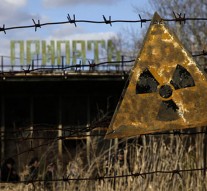
Chernobyl Disaster: What Is the Situation Thirty Years Later?
Energy 26 April 2016Thirty years ago, the worst nuclear accident in history occurred in Chernobyl, causing devastation in what was then part of the Soviet Union.
At 1:23am, on April 26, 1986, reactor four of the Chernobyl Nuclear Power Plant exploded, following an operator error. The fires burned for 10 days, spewing radioactive fallout over tens of thousands of square kilometres. All of a sudden, the Ukrainian, Belarusian and Russian soil and waterways were substantially contaminated by more than 100 radioactive elements. In some areas, the level of radiation was almost 77,000 times higher than the average background norm and 40 times the maximum permissible.
Due to such contamination, 135,000 people residing in nearly 100 towns and villages within 30km of the reactor were obliged to evacuate soon after the explosion, while 335,000 people were resettled later on. Other neighbouring countries also suffered radioactive contamination, such as Austria, Finland, Germany, Norway, Romania and Sweden.
Even today accurate figures on the number of people affected by Chernobyl are difficult to find, as no agreement has been reached on the scale of human suffering and loss so far. Official data estimated only 4,000 deaths related to the explosion, together with the instantaneous radiation burn injuries and the deaths of over 30 firemen and plant workers. However, more than 200,000 people probably died in Ukraine, Belarus, and Russia because of the accident, stated a report issued by Greenpeace in 2006. Across the world, Greenpeace estimates up to 6 million victims.
Unemployment and Poverty for Those Who Remained
Nowadays, 30 years later, around five million people still live on contaminated soil in affected areas of Ukraine, Belarus and Russia. Some were allowed to remain in their homes, but they have been facing unemployment and poverty ever since.
The affected areas were overwhelmingly rural and there are not many employment opportunities outside agriculture. Furthermore, local industry, have troubles in selling goods labelled ‘Produced in Chernobyl’, especially agriculture.
It is not often discussed in public whether these places are really safe, even though Ukraine has opened the ‘Exclusion Zone’ to tourism.
A New Protective Sarcophagus Is Long Overdue
According to a recent report by Greenpeace, a new protective “sarcophagus” to encase the ruins of the nuclear reactor is long overdue, as today’s crumbling shell stores 440,000 cubic meters of radioactive waste. Moisture leaking through the cracks is accelerating its deterioration.
However, delayed for 12 years, the new “sarcophagus” will not be placed over the existing structure before the end of 2017. Meanwhile, the costs for the so‑called Shelter Implementation Plan (SIP), which aims to provide a step-by-step strategy for making the site safe, have quadrupled to around EUR 2.15 billion.
Greenpeace is concerned that, once the SIP has been finished, Ukraine may be left alone to deal with this problem. The report also highlights that practically no work has being done in order to develop long-term solutions. Even the pilot project to test safe disposal of the radioactive material was discontinued.



